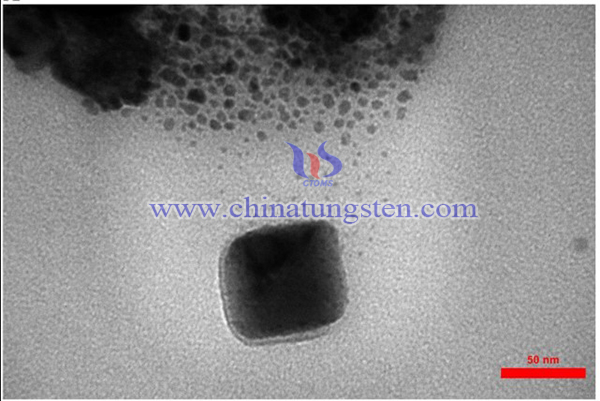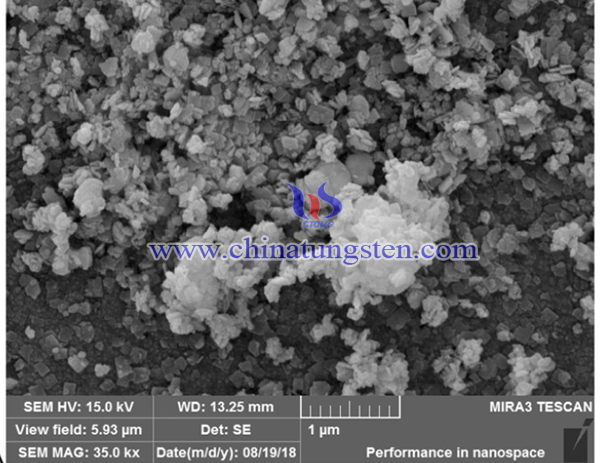Nano Composite Synthesized Using APT for Photodegradation of Antibiotic
- Details
- Category: Tungsten Information
- Published on Thursday, 04 February 2021 18:04
Antibiotic resistance has been considered as a major account for hundreds of thousands of annual deaths and hence it has been considered a major global health threat. This has brought high contents of antibiotics in waterways and soils.
To get over this issue, a photocatalytic nano composite has been synthesized by combing three nanocomposites. Ammonium paratungstate (APT) has been used as starting material for WO3 nano composite. The resulted Cu2O- BiVO4-WO3 nano composite, with a enhanced photocatalytic activity than the individual semiconductors, was then used in the sulfasalazine degradation as a typical antibiotic pollutant.

The synthesis design of Cu2O/BiVO4/WO3 nano composite is as below:
Ammonium paratungstate(APT), Cu(CH3COO)2.H2O, Bi(NO3)3.5H2O, NH4VO3, , ascorbic acid (C6H8O6), HNO3 were used as raw materials.
Cu2O nano composite was synthesized in following steps. 100 mL 2.7 mM Cu(CH3COO)2.H2O solution was added into a 20 mL 0.25 M NaOH solution under vigorous stirring. Then 15 mL 0.15 M AA was added until the deep blue color was gradually changed to burgundy type. AA acted as a reducing agent. This confirms the production of Cu2O colloid. The produced Cu2O NPs were separated by centrifugation (at >14,000 rpm) and washed with water (three times) and dried at 80 °C.
BiVO4 nano composite was synthesized in following steps. An aliquot 9.70 g Bi(NO3)3.5H2O in 20 mL concentrated nitric acid was shaken for 2 h for complete dissolution (solution A). 19.9 mmol (2.33 mg) ammonium metavanadate was also added into a 20 mL 0.1 M NaOH solution and shaken for 2 h for complete dissolution (solution B). After adding solution A to B, the mixture was stirred for 1 h. Its pH maintained to 7 and it then was added to a Teflon-lined stainless autoclave. After heating it at 180 °C for 6 h, the suspension was centrifuged to separate the obtained yellow precipitate. The precipitate was then dried at 80 °C for 12 h.
WO3 nano composite was synthesized in following steps.. 0.118 mmol (0.35 g) of ammonium tungstate hydrate was added into 67 mL of water and dissolved at 80 °C. Then 45 mL concentrated HNO3 was added drop wise under continuous stirring (800 rpm). The resulted solution was stirred at 80 °C for 70 min. Then the obtained sample remained at natural conditions for 1 day. After centrifugation, the separated precipitate was dried at 80 °C.

Aliquot amount of Cu2O, BiVO4, and WO3 NPs were mixed carefully in an agate mortar for 10 min. The resulted Cu2O-BiVO4-WO3 nano-composite was used for the next experiments. The result nano composite was adopted in the photocatalytic degradation of SFSZ (sulfasalazine). The XRD, UV–Vis DRS, SEM, and photoluminescence (PL) techniques were used to characterize the composite.
In summary, the synthesized nanosized Cu2O/BiVO4/WO3 composite showed a decreased PL intensity with respect to the individual ingredients. The result showed that a lowest PL intensity and the highest degradation rate of 67% with a Cu2O:BiVO4: WO3 mole ratio of 2:1:1.
- APT Manufacturer & Supplier, Chinatungsten Online: ammonium-paratungstate.com
- Tungsten News & Prices of China Tungsten Industry Association: www.ctia.com.cn
- Molybdenum News & Price: news.molybdenum.com.cn
- Tel.: 86 592 5129696; Fax: 86 592 5129797; Email: sales@chinatungsten.com



 sales@chinatungsten.com
sales@chinatungsten.com